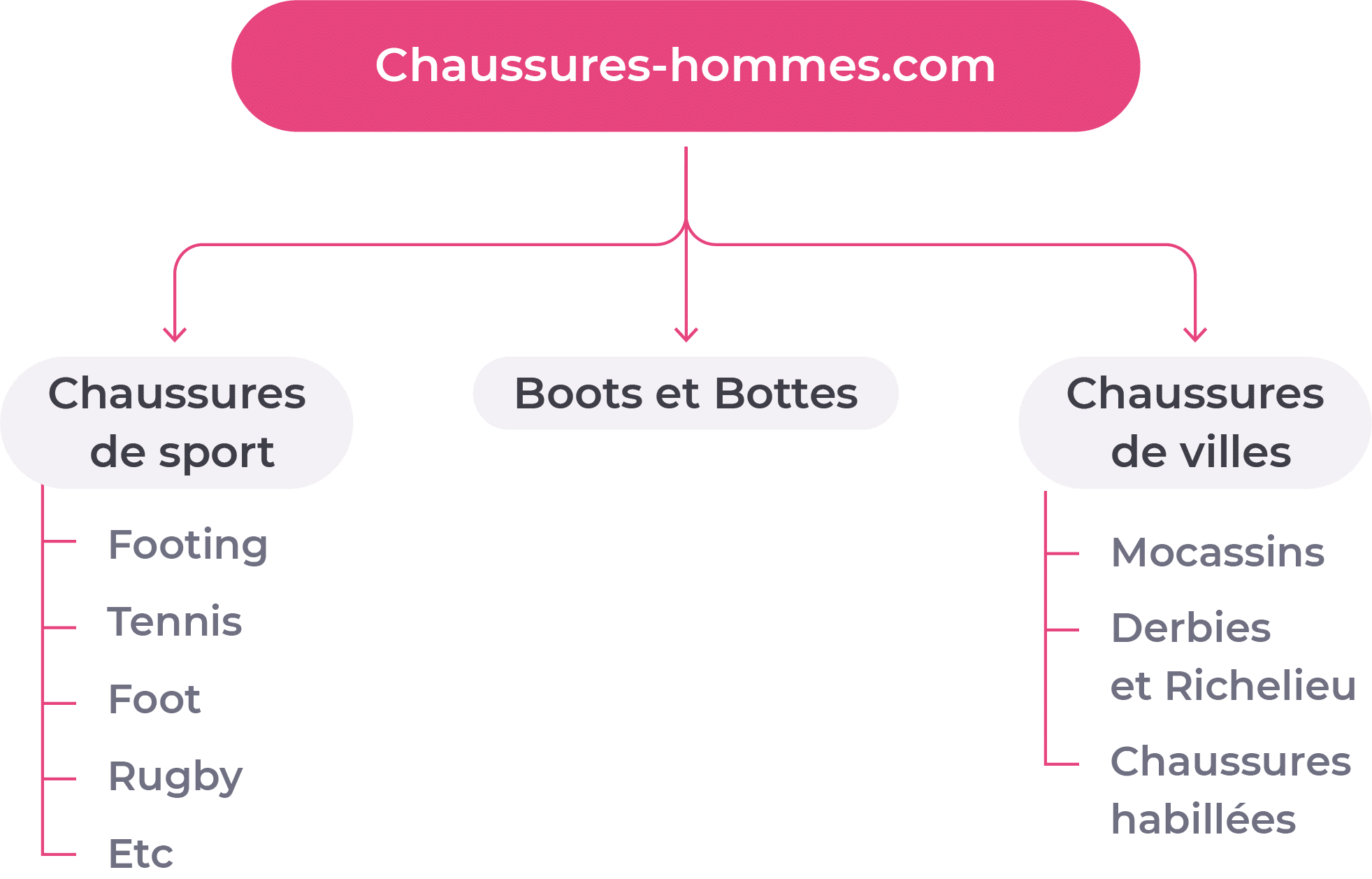Topic silos and SEO silos are two major SEO concepts. Different yet complementary, their synergy will boost your website’s SEO performance.
In this article, we will introduce you to these two concepts and how to get the most out of them!
Through tips and examples, discover how to create YOUR topic silo with the right method and tools by downloading our latest white paper.
This white paper dedicated to topic silos will take you from theory to practice: from the basic concept to siloing, pillar pages, or topic silos and implement the right methodology.
SEO silo VS topic silo: what’s the difference?
Before getting started on quality SEO silo and topic silo, it is important to understand the differences between an SEO silo and a topic silo. In the world of SEO, these two concepts are commonly mistaken and interchanged. Despite being close concepts they are different. But don’t worry we’ll help you never confuse them again!
Definition of SEO silo and topic silo
First of all, there are two types of siloing and therefore two ways to organize content on a website. You’ll find SEO siloing and topic silos.
Most sites are built on topic silos. For example, in e-commerce, the silo organization is used to define the parent categories, the categories, the sub-categories, the product pages, etc. The idea is to build a logical architecture for easy and intuitive user navigation. The content hierarchy is based on a UX vision, easily guiding users around your website.
As for SEO siloing, it is rather based on a strategic organization going beyond topic siloing and the user-centric logic. Here, it is the Googlebot’s understanding that comes first. The page hierarchy is optimized for robots, that need to instantly and easily understand what your site is about.
In short, topic siloing organizes pages and products according to the user’s needs, and SEO siloing focuses on the robot’s understanding of your website to rank it on Google.
Here we can see that the categories of this website are organized in closed silos.
Definition of a topic silo
The topic silo of a website is the contextualized links that connect the different pages and silos of a website, creating a coherent topic universe.
A topic silo is closer to internal linking. The idea is to connect closely topic-related pages with internal links to feed the target page of the website with a maximum of juice. But also to help your visitor access content related to the one currently viewing.
Building a topic silo requires greater analysis than SEO siloing. It goes beyond studying the theme and semantic analysis, a market study and creating accurate personas is essential: who are your targets, what language elements do they use, what keywords do they use, what are their pain points, what are they looking for?
To facilitate the implementation of your topic silo, several tools are available: Yooda Insight, Cocon.se, SEMrush, SEObserver…
Setting up or reinforcing a topic silo requires a lot of work but can significantly impact your positioning, your traffic, your ROI…
To simplify these two concepts, remember that:
- SEO siloing is about organizing and prioritizing the elements of a website based on theme or keywords in order to help both online users and/or robots to browse the website.
- Topic silo links pages and articles related to a common topic to streamline user navigation and to provide them with as much information needed (related or complementary articles, etc.) to answer their initial request.
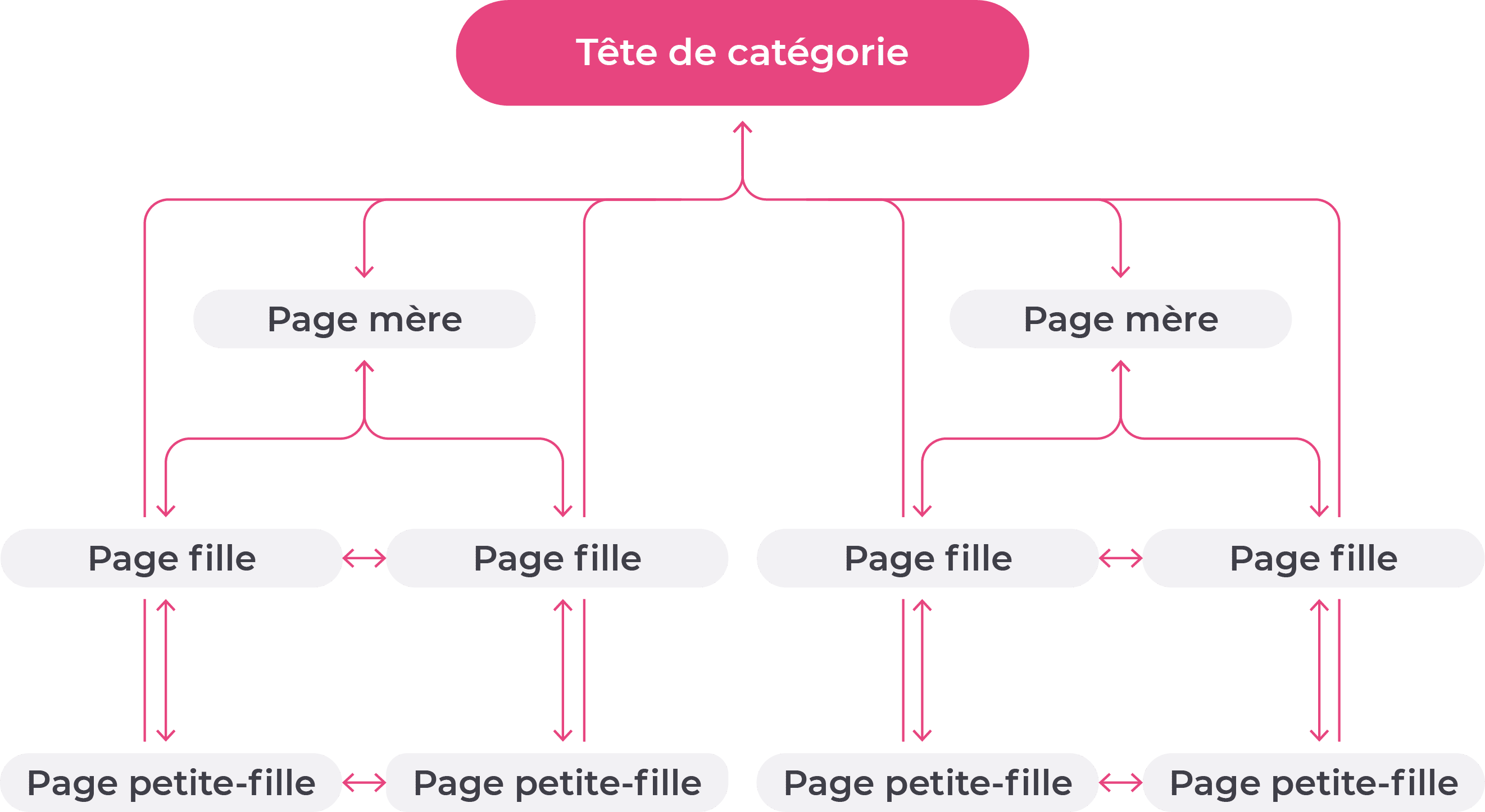
This topic silo is used to link the different levels of the silo together, but also silos 1 and 2 to further support topic consistency.
Web semantics
The semantic web
The challenge of the semantic web is to succeed in making information understandable by humans AND machines. The concept of the ”intelligent” search takes on its full meaning.
With the rise of the semantic web, computers are no longer only used to store data and make it readable, but also to understand and read into it.
The concept of semantic shift
Without knowing this concept, everyone has already come across a semantic shift.
For example, the sentence ”I have a problem with my server” or ‘’Our server has let us down” does not have the same meaning if you are talking to a badminton team or a computer specialist. Most of the time, the person you’re talking with will understand you perfectly without having you specify which server you’re talking about. But for search engines, the reality is somewhat different. They need context to understand whether you are talking about the person that serves the ball, or the system that makes your website available online.

Applied to SEO, the semantic shift inevitably involves semantic clarification. But how do you do it?
The first step is to create a consistent semantic field across the different pages of the website, precisely using topic silos. But the difficulty lies in avoiding making two pages compete, but rather making them complementary.
Google will judge the semantic relevance of a website by evaluating the consistency of the semantic field: which words surround keywords, the occurrences of each keyword, the Hn tags, the URLs… Thanks to these clues, the bots will be able to understand that the word ” server ” from website A is related to ” sports ” while the one from website B is related to ” computers ”.
In the field of SEO, the semantic shift can allow you to create links between several websites that do not deal with the same topic, but which can be linked from a common word. Since we are slowly but surely moving towards the semantic web, this type of practice is bound to disappear.
In the world of SEO, meta tags are a concept defined by Christian Meline. They are the keywords identified following the study of web users’ searches.
Google’s goal is to offer relevant search results to online users. To better understand the results provided on the SERP according to the initial query, it is interesting to study user behavior in relation to these results. The challenge for Google is to correctly predict which results are likely to please them the most. The prediction engine is fed according to the accuracy of what Google has provided to users.
To choose which results to provide users, Google uses a dictionary form (set of words that have the same meaning) to determine whether the pages provided to users are consistent with the rephrasing, or not.
Identifying meta tags means reshaping how Google defines which page answers this or this search query. A meta tag is therefore a set of “predicted” dictionary forms, generally 15 different forms of a word or topic, that must all be placed on your page. However, using a meta tag will not rank you at the top of your main key request. But, your internal or external netlinking actions will make more sense.
It reveals the language and search intentions, each meta tag related to an activity is usually a category on a website.
Similarly to creating a topic silo, you can use Cocon.se to identify the most interesting meta-words and work on your dictionary forms accordingly.
What are the advantages of SEO siloing?
Beyond the benefits in terms of organization and optimization of the overall architecture of your website. The pyramid structure, of siloing, has several advantages for your SEO. Positioning your website on highly-competitive queries allows for a better flow of authority juice on your different strategic pages and to benefit from increased visibility on Google are some of the opportunities of SEO siloing. How can you take advantage of it?
Use siloing to position yourself on a competitive query
Strengthening your website’s topic silo and setting up a well-built siloing will allow you to gain valuable positions on highly competitive queries without effort.
By building several silos that feed juice to a target theme page, you will increase your chances of positioning yourself among the first results on a specific query. Of course, a precise study of dictionary forms and meta tags will help you identify the most accessible queries and prioritize your action plan according to your objectives.
When creating your internal mesh, it is important to have previously defined the different silos that you want to create and to restrict yourself to them. Creating a mesh according to the silo structure does not consist of creating as many links as possible between different pages without planning it out, but rather by creating closed silos made up of pages and articles that only link between themselves.
Optimize topic-specific PageRank flow
If PageRank is an outdated concept today, in its original sense at least, topic-specific PageRank or topic-sensitive PageRank is important in a siloing approach. When building your topic silo, you create links between different pages that are close to each other, or complementary. Siloing allows you to manage this PageRank as well as the juice coming from the different links that point to a given page, which is usually diluted within these pages.
Enhancing your topic-specific PageRank is a kind of PageRank Sculpting where topic consistency is the goal.
Increase your visibility on Google and attract more traffic
A well-made siloing definitely improves your website’s crawlability and therefore the indexing of the different pages. Having an up-to-date website for your users can greatly boost the quality of the UX you provide. Being Google Friendly is always good!
But beyond this aspect, a well and silo strengthens the SEO structure of your website, better positing your target pages on strategic search queries. Your deep pages are meant to rank on long-tail queries, while your target pages will be boosted by the juice coming from all the internal links they benefit from.
If the siloing approach essentially consists of linking certain pages together, it implies that some links must also be removed, even if they have a reason to be there. Siloing takes precedence over everything else.
Following a series of tests, a team of SEO experts claims that siloing can increase traffic by at least 3% and improve website positioning by about 13%. So, why not get started today?
When should you implement a siloing strategy?
It’s never too late to apply SEO siloing to your website, it will just be different depending on your situation. Of course, it’s easier to start before launching your website and creating its structure. But don’t worry, you can also do it if your website is already available online and you’re looking at changing your marketing focus. In the case of a Google penalty or during a redesign, the implementation of siloing is highly recommended!
Create the silo before launching your website
Unsurprisingly, this method is the easiest to set up but also the most efficient: as soon as it is online, your website will benefit from a strong structure. Its different categories and its architecture are based on a pre-defined keyword strategy.
Is your website already online and you want to create silos? Without knowing, you might have already done half the work. To check this, do an audit to identify the different silos of your website, and to pinpoint those that are not fully closed.
In this diagram, the homepage is represented by the central green circle and the lighter green circles are the strategic categories/landing pages.
For each light green circle, we can see all the pages that are linked to it. The blue parts of the diagram highlight the pages that prevent the cluster from being fully closed.
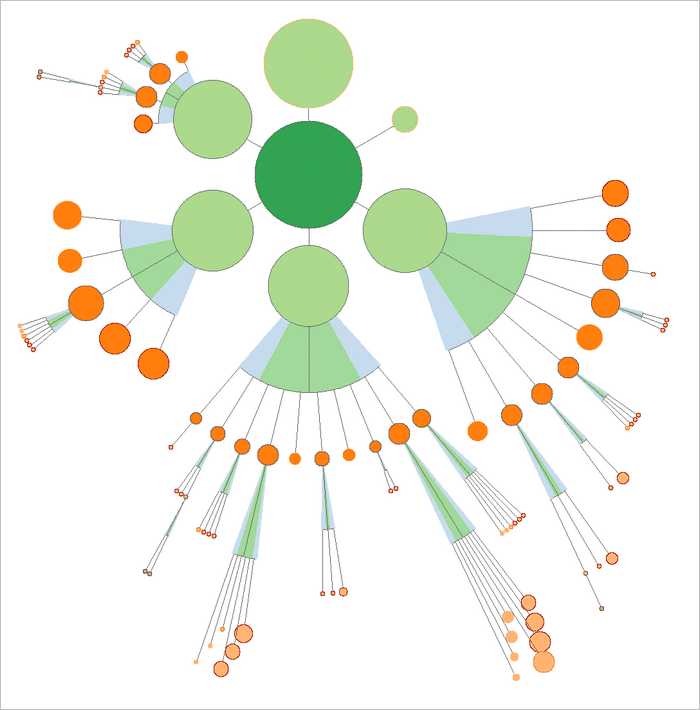
source: http://cocon.se
Redesign: a great opportunity to switch to siloing
Are you planning to redesign your website soon? If you want to change the design and tree view of your website, you might as well go deep and create silos! In addition, siloing will allow you to boost your website’s SEO as soon as it goes online. Its construction will also be a good opportunity to review your global SEO strategy.
By implementing silos, it will help Googlebots know where to go, what are the links between your pages and articles, and what they have to take into account when crawling your website. Its main purpose is to improve the understanding of your website’s architecture.
Hit by a Google penalty? It’s time to use silos!
Has your website been recently hit a Panda or Fred penalty? It’s time to focus on your content, which is obviously the reason for this penalty. Our SEO agency can help you optimize content management. Reshaping an architecture based on the siloing approach can defiantly help you get out of this tricky situation and get back on track faster! Provided that you have quality content! Building a castle on ruins is rarely a good idea…
Use silos to stay ahead of your competitors
Building your site based on the siloing approach is like building an online fortress. In other words, siloing offers your website a strong internal mesh and topic silos: together, these two elements can guarantee you good positioning on the SERP against competitors who have not implemented SEO siloing on their website.
Now that you know all the technical terms and concepts related to siloing as well as its advantages and why to implement it, we can move on to the next step on how to implement it.
How do I implement SEO siloing on my website?
Creating and implementing SEO silos are two long and tedious steps but the benefits make it worthwhile. Here are the 6 steps to designing and implementing your SEO silo.
Study targeted users and the different personas
The first step is to think about your targets and refine your knowledge. You need to precisely identify who your users/buyers are? What are their interests, their problems, what vocabulary do they use, what needs do your products and services provide? Never lose sight of the context in which your target will visit your website. This element will help you create a user journey that’s adapted to the target’s customs.
The next step is about defining buyer personas. Here, empathy will come in handy! The quality of the persona study will truly depend on your ability to put yourself in the shoes of your buyers to better understand their buying behaviors, their journey on your website, and the strategic challenges they raise.
To help you see things more clearly, let’s take the example of a website that sells food catered to children.
Products could be categorized as: soup / milk / dessert / main dish / vegetable / meat and fish… But this categorization does not take into account the needs of the user, namely parents who are looking for products suitable for their child.
In this case, a product segmentation by age is much more relevant as it will prevent users who are looking for baby food for a 9-month-old to get lost on product pages for 3-year-olds…
Define a keyword strategy
Siloing and keyword strategy are closely linked. No siloing is possible without a solid keyword strategy. Study the keywords and expressions related to your activity, their search volume but also the related searches and current trends.
Do not neglect this step as your siloing will result from it. A botched keyword study will result in bad siloing and SEO results!
The semantic consistency of your website will strongly depend on it as well.
Cluster main keywords
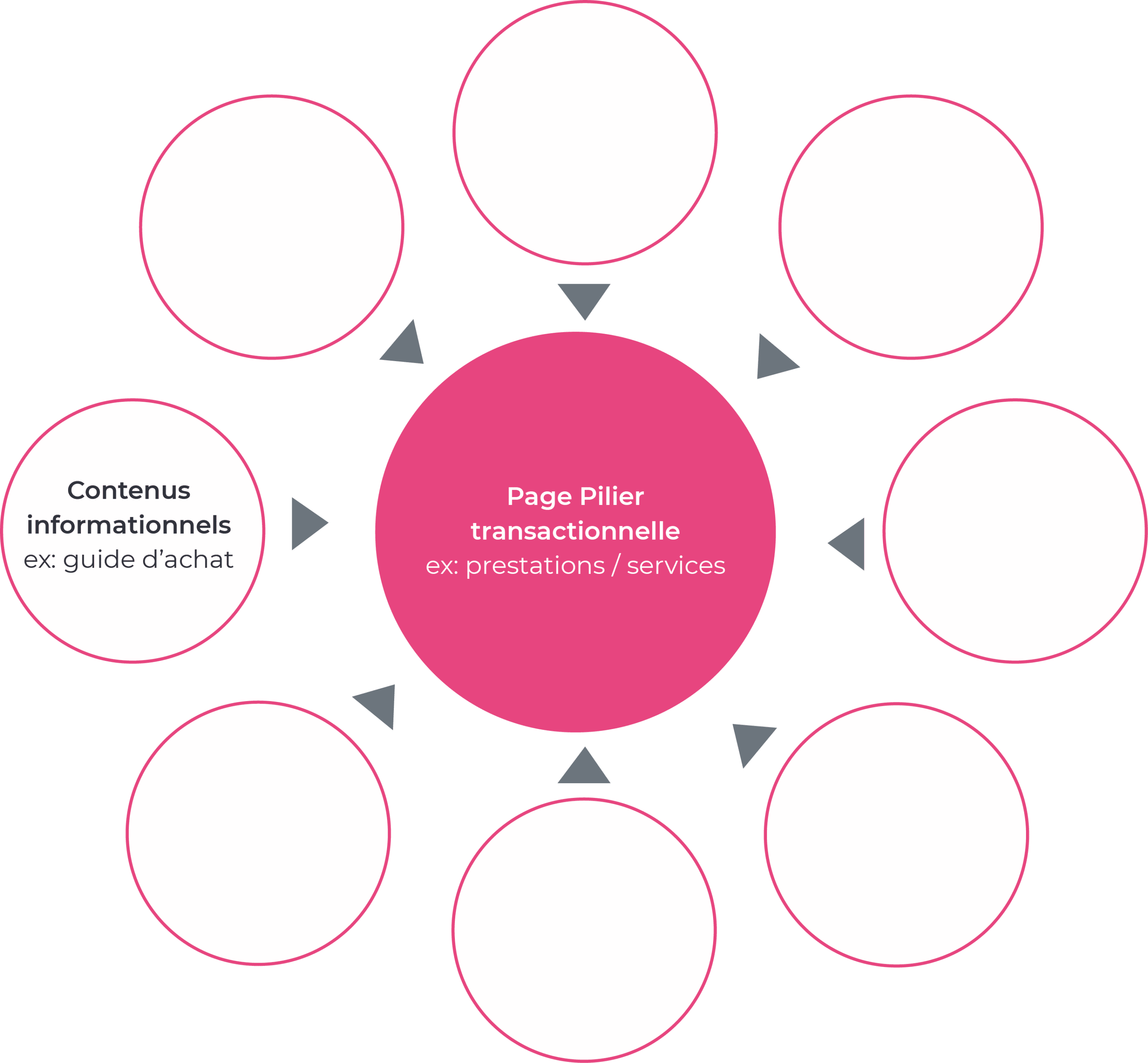
The aim of siloing is to group together pages dealing with the same topic to create a consistent semantic set. To help you build it, clustering keywords is essential.
For a small website, you can do manual clustering if you have some time to spare. However, for a website made of hundreds of pages, this work will be extremely time-consuming, and doing it manually will likely lead to errors and oversights.
Create a topic cluster Mind Map
Creating a Mind Map is the best solution to visualize and verify the consistency of your website’s future tree view.
You will need to define :
- your target page, the heart of your activity, where you want to send as much juice as possible to position it on the most strategic query;
- your secondary pages which are intended to support the positioning of your target page;
- your final pages that will support your secondary pages, and your target page indirectly but they won’t necessarily need to rank on Google.
There are also 3 types of links that are used to create a topic silo:
- mother -> daughter links that go from target pages to secondary pages, and from secondary pages to final pages;
- daughter -> mother links, which work the other way around and go up from secondaries and final pages to those of 1 level above;
- sister <-> sister links are mutually exchanged links between same level pages.
Using a Mind Map tool, you can directly import the created structure to your website.
Writing and integrating content into pages
You have defined your target, your strategic keywords, and a sketch of the final silo structure: now is time to build the content network of your silo!
To increase tenfold the authority of your topic silo, your content must be highly-qualitative, rich, and semantically consistent with the silos in which it will be stored.
Closely follow your Mind Map to avoid mistakes. Semantic consistency is difficult to build but easy to destroy…
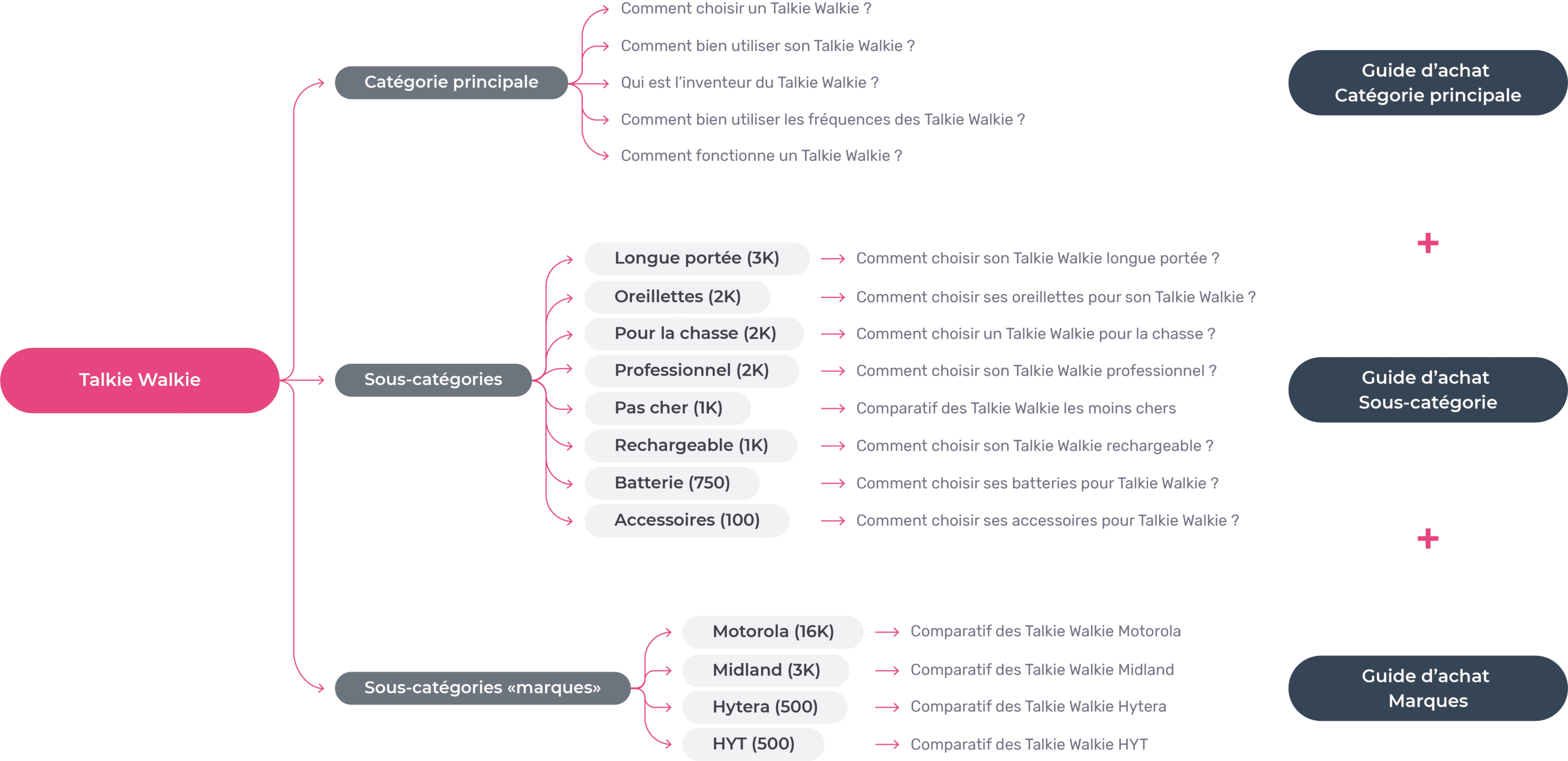
Create the SEO silo mesh
Follow the page’s structure when adding links – Hn tags – and the hierarchy of the different links between the target, secondary and final pages.
Keep in mind that a target page includes ONLY downlinks.
When a secondary page points to the target page, the link must be at the top of the page, while links pointing at final pages would be positioned below it. Once again, it is essential to respect the hierarchy. Mutual / cross-links should be placed at the bottom of the page.
The final pages should have the upward links at the top of the page, and the cross-links at the bottom of the page.
If you have built several topic silos within your website, the challenge is to link them together. The solution is quite simple and consists of creating a map of the different clusters that are accessible through semantic links. Once built, this page will be linked to the homepage, the footer, or the sidebar of the website to improve the crawl of Googlebots.
To better understand the ROI in using SEO siloing and topic siloing, here are 3 points to study:
- log analysis will highlight which strategic pages are crawled the fastest. The bots know exactly where to go and how to get there because you told them!
- positioning your target pages on the SERP in relation to the queries and strategic keywords on which you want to rank.
- the traffic generated by your strategic pages since they benefit from a better positioning on the SERP.
In the end, it is the structure of your website that needs to be adapted to topic siloing and SEO siloing. A tight partitioning and perfect control of the depth of your pages and your architecture are essential in building great siloing.


